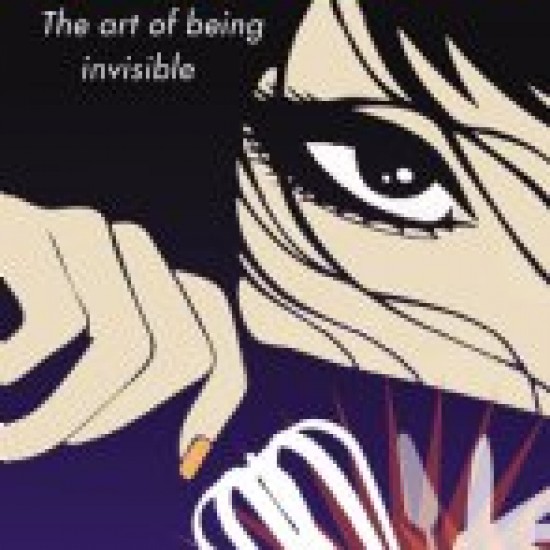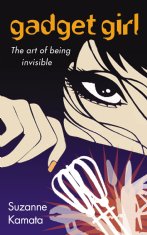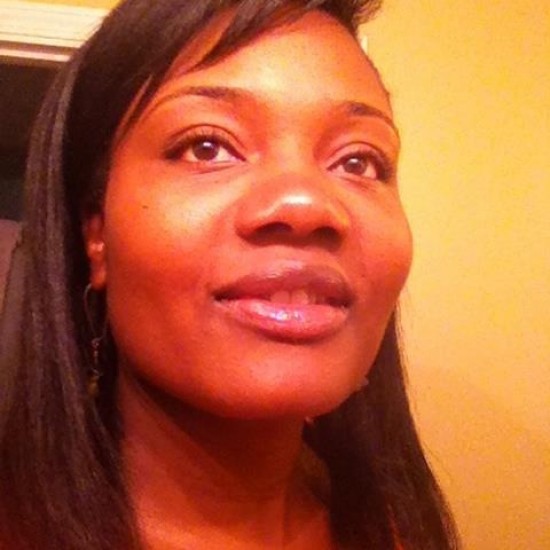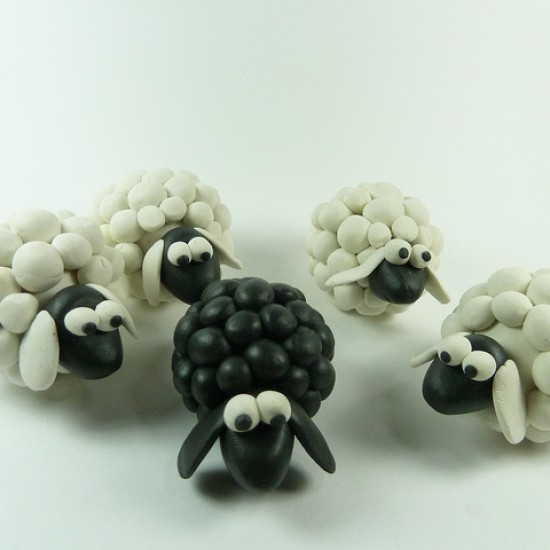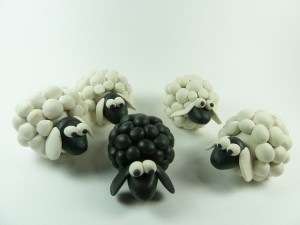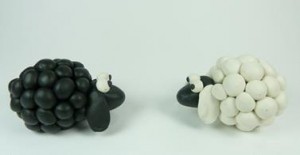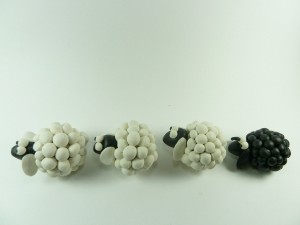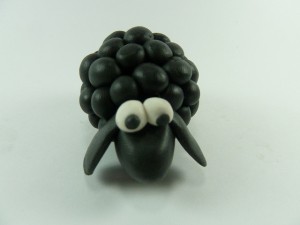I was nine years old, racing around the mango tree in our front yard with my older brothers, when Ma’s throaty voice carried out to reach me. “Kesha, come on in here and get your hair combed.”
I took sluggish steps into our building, dawdling up the stairwell, hoping she found herself lost in a different task by the time I reached the second floor flat. She called me into the kitchen. Atop the stove, a roaring fire wrapped itself around a metal pressing comb. Ma stood behind a stool. “Sit,” she said, as she fiddled through the bag of combs, brushes, barrettes and containers of pomade. Moments later, I was wincing through her touch while she yanked at the mass of entangled curls on my head. She pulled out a small wooden comb, and fought through the knotted hair to find my scalp. She split the hair into four, kept them separated with elastic bands and slathered globs of coconut-scented grease onto a clump of hair. I waited to hear hissing sound as the heated comb kissed my dense curls.
“Be still,” my mother snapped, each time the comb pressed into my hair. She huffed, cursed with every tug and pull, and paused only to wipe sweat from her brow or smoke a cigarette. I felt as if the comb had been replaced by a knife and used to cut small gashes into my head. The blood would soon trickle down my face, I just knew, so I squealed through the wait. My brothers chuckled while they watched, twisting their faces to mock my tortured expression. After all the sweat and tears, the blood did not show. Both my ears had taken a few licks from the fired comb, and my forehead was marked in lines of red where the comb slipped a few times, but at least she was done. My mother handed me a mirror and spoke in a more subdued voice, “How you like it, baby?”
I stared at the strained and wet skin wrapped around my face, and saw anger behind my reddened eyes. I wanted to tell her I hated it, until I raised the mirror higher to see the loosened hair spilling past my shoulders. My hands went up to feel the heat emanating from my scalp, and my fingers slipped between the silky strands. A smile split my lips just then, and a boisterous laugh escaped. “I love it, Ma,” I said.
I did love it. Feeling more settled, I sat still as she parted the hair into two sections with a line running down the middle. After plaiting each portion, she clipped the ends with two butterfly shaped barrettes. I walked around the compound tossing my head from side to side just to feel my hair move. I sauntered through the backyard towards to the boy’s quarters where I knew the help congregated on Sunday evenings. It wasn’t long before one of the women called me beautiful and asked if my hair was real. The ultimate test was in the touch, her close inspection of the plait from start to finish for any attachments woven in. As she fingered my hair, she said to the woman standing beside her, “It is because her mother is Akata.” That woman nodded, and it was settled. I wanted to believe them, that my hair was in fact a product of my Black American mother’s ancestry. I would say nothing however, about the fiery experience that left my hair straight. I walked away smiling, believing that Ma’s foreign blood fed my hair differently, and gave it length unlike my friends who wore their hair shorn or in braids that ended in fuzzy tips at the nape.
No one ever called those girls beautiful. Girls with short hair did not show up in advertisements for shampoo or pomade, nor did they win the handsome guy in movies. Even without knowing what it meant to sit in society’s notion of idyllic beauty, I was in it and enjoyed the feeling. That was in 1986, in Lagos Nigeria. Three years later, I stepped off a plane in snowy Chicago after my parents’ split. Within months, I found myself at the bottom of the beauty slope, where more than just long hair awarded one the prize. I decided then, that beauty was neither a result of my hair style, nor in the way that others perceived me. When I looked in the mirror, I saw a tall, dark, and happy person who was shrouded in a blend of my mother’s generous smile and my father’s high cheekbones. I was beautiful to me, stunning in fact, to the only person whose opinion mattered.
As an adult, I relaxed my hair. Some said that black women who did this were self-loathers, aiming to look more white. I often laughed at the accusation. I was the color of roasted walnut, and spoke with a thick Nigerian accent, there was nothing I could do to defy my blackness or pretend I was white. I cut bangs to fit the trends, and watched my split ends spread until my head was a crown of brittle strings that required braids to help it flourish again. After a long break from chemical treatments, I twisted the coils into dreadlocks. I was now in a different arena when it came to my hair. Out of curiosity, people asked to touch my locks. Some wanted to know how I kept it clean, and a few requested a sniff test. At times, I was presumed to be a pot head or a rebel, a fighter for the black woman’s revolt against society’s expectations on beauty. I was none of those things. The look happened to be freeing, cost effective and less time consuming in my life as a working mother with two daughters. Seven years in, I felt trapped again in a façade of others’ expectations. I decided to shave my head, and wore it cropped for a while. These days, I have returned to pressing my hair. As a mother of four, I often wear it pulled into a pony tail and that works for me, for now.
I had never considered the evolution of my hair as an extension of myself, I simply wore my hair the way I wanted. Living in America, I now know that ones hair style says so much more about a person and often holds too much power over that person’s ability to just be.
When it was my turn as a mother braiding her child’s hair, I saw the sadness in my daughters’ eyes whenever I called them to sit for a braiding session. I saw them squirm and squeal at the behest of my touch, and I watched their tears recede and smiles blossom with relief when I was done. I too would ask, “Do you like it, baby?” They always did, but I walked away from those moments feeling conquered by the hair that I gave to them. They only know America as home, and have likely never felt that their hair was beautiful. It saddened me every time I saw them rise from between my feet, eager to flee from my touch. But this was what mothers did in my culture, they braided their daughters’ hair, I often had to remind myself.
When my girls became old enough to speak up against my hands, each one wanted to break free of the coils that tugged and pulled at the scalp. They wanted to escape the painful inflictions of my pressing comb. They wanted to have relaxed hair. I refused to treat their hair with any chemicals, but they were persistent. It wasn’t until I found my eldest leaving notes around her room about how much she hated her hair, herself, that I learned that there might be more tied to this Hair business.
We live in the perpetually rainy Pacific Northwest, where only six percent of the population is Black. My girls went to school among other girls who found no qualm in racing through the rain with uncovered hair. Those girls bounced giddily about with straight pony tails, loving life in society’s idea of ideal beauty, while my daughters lived in a shade of fear from water stiffening their curls.
I am married to a Caucasian man and he is step father to my black daughters. He stood idly by one day, watching our monthly tradition of braiding hair. My youngest was screaming, flinching from my hands well before they reached her head. My husband intervened, “Take it easy on her.” I asked him to stay out of it. “You wouldn’t understand.” I said. As I finished her last braid, I wondered about my husband’s experience with black hair while he was growing up. Like most of the white people I know, he didn’t grow up knowing black people. He didn’t know any besides me and my daughters. He had a sister with golden locks that likely melted in water and bounced back to life with a few strokes of a brush. He never had to listen to her cry for the sake of beauty, nor did he see his mother tug and pull stubborn coils into submission. Later, in discussing the matter with him, I begged him to stay away while I was doing their hair. “Why?” he asked. I explained that black women had done this for generations. Every black girl has walked the same torturous path on the journey to beauty, I told him. Many of us felt the same punch in the stomach when called upon to get styled. Some of us knew the singe of the hot comb by sound, and most carried scars around the ears and neck from flinching at the wrong time. “It is just the way it is done,” I said. He promised his support and showed it by offering the girls water, juice, candy, anything to force a smile while they got their hair combed.
The three of them approached me in solidarity one evening, and he spoke for them. “The girls said they want their hair relaxed.”
My protest against straightening their hair came from a fear that was all too real for me. My reasons: they are too young, processing hair every six weeks for two girls is expensive, the hair will eventually fall out.
“But they would be happier,” he told me, “it’s their hair.”
I understood his intent to help them reach happiness. He wanted our daughters to have pleasant experiences with their mother. I also wanted to erase the tears, and suffocate the pain that accompanied their experiences, so I gave in.
Each girl walked around with laid back hair, tossing the limp tresses as she stared in the mirror. They wet brushes with water and scraped at their heads until the hair flattened onto their scalp like a silken scarf. They were happy. I was happy. My husband was happy for us. Months later, I noticed broken pieces hair on their pillowcases. The bathroom floor collected wilted strands every time they brushed. Their pony tails hardly gathered into one anymore, and the thinning left round patches on their scalp. I made a decision to remove the chemicals from the equation. I found a woman who braided hair for $150 each, and we kept the girls in attachments until their natural hair grew back.
Now, my eldest girl, near eighteen, wears her natural afro with pride. The younger, prefers the long extension braids because she is an athlete without the time to tame it every morning. The hot comb dwells in a box at the back of the linen closet, free to no longer inflict pain on any of us. The journey to beauty was a long a painful one, and it took many trials to find what worked for all of us. Now, regardless of society’s idea of beauty, the three of us wear our hair as we choose, and all are lovely. It is only hair.
By: March 2014 Guest Blogger — Kesha Fisher
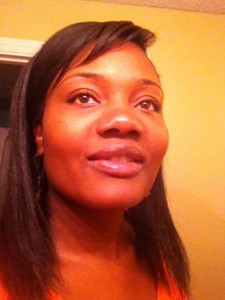 Kesha is a a married mother of four. She lives in the Pacific Northwest, but was raised in Lagos, Nigeria. Kesha is a published fiction writer, with a focus on female inequality specific to African and American cultures. “There was a time in my life when I felt my experiences were solely mine to suffer, until I started writing. Life then opened up, tremendously.” You can follow Kesha on Twitter @keshfish and on Facebook search Kesha L. Fisher Writings.
Kesha is a a married mother of four. She lives in the Pacific Northwest, but was raised in Lagos, Nigeria. Kesha is a published fiction writer, with a focus on female inequality specific to African and American cultures. “There was a time in my life when I felt my experiences were solely mine to suffer, until I started writing. Life then opened up, tremendously.” You can follow Kesha on Twitter @keshfish and on Facebook search Kesha L. Fisher Writings.




